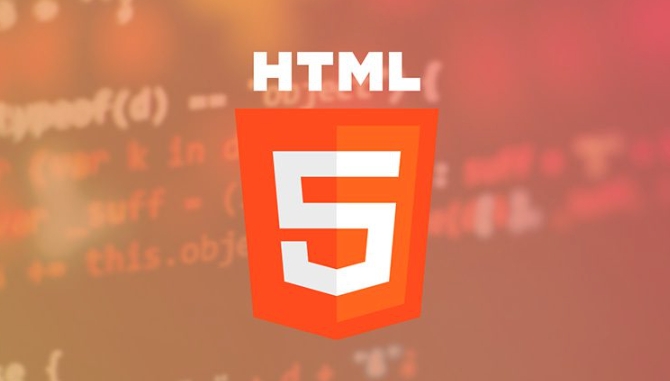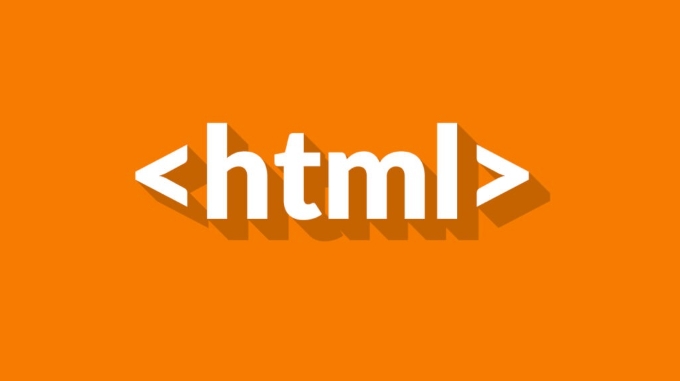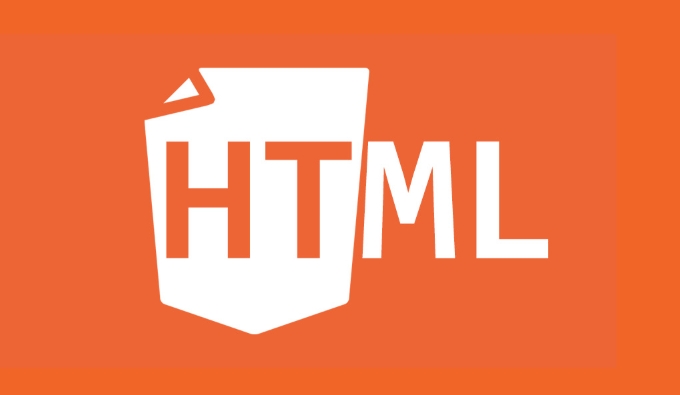What is the difference between paired and self-closing HTML tags?
Jun 27, 2025 am 01:54 AMPaired tags have opening and closing tags and wrap content, while self-closing tags do not require a closing tag and do not wrap content. Paired tags like
and
define elements with visible content or structural layout, whereas self-closing tags like <br> or are used for inserting standalone elements such as images or line breaks. Browsers expect closing tags for paired elements to determine their end, but self-closing tags signal completion immediately, preventing confusion in rendering. Proper use of each tag type ensures cleaner, more predictable HTML structure and layout.
are used for inserting standalone elements such as images or line breaks. Browsers expect closing tags for paired elements to determine their end, but self-closing tags signal completion immediately, preventing confusion in rendering. Proper use of each tag type ensures cleaner, more predictable HTML structure and layout.
The difference between paired and self-closing HTML tags comes down to structure and how they’re used in a webpage. Paired tags have both an opening and a closing tag, while self-closing tags only need one tag and don’t wrap around any content.

What Are Paired Tags?
Paired tags are the most common type of HTML tags. They consist of an opening tag like <p></p> and a closing tag like

For example:
<p>This is a paragraph.</p> <div class="container">Some content here</div>
These tags help browsers understand where an element starts and ends. Without the closing tag, the browser might not render the page correctly.

Use paired tags for elements that:
- Have visible content (like text or images)
- Wrap around other elements
- Need structural clarity in layout
What Are Self-Closing Tags?
Self-closing tags don’t require a separate closing tag because they don’t wrap around content. They are typically used for elements that insert something into the page, like images or line breaks.
Examples include:
<img src="/static/imghw/default1.png" data-src="image.jpg" class="lazy" / alt="What is the difference between paired and self-closing HTML tags?" > <br /> <hr /> <input type="text" />
You may see them written without the slash (<br>), especially in older code or when using HTML5. But including the slash is good practice if you're working in XHTML or want stricter syntax.
These tags are ideal for:
- Elements that don't contain content
- Inserting media like images or form inputs
- Line breaks and horizontal rules
How Do Browsers Handle Them Differently?
Browsers parse HTML based on tag structure. For paired tags, the browser expects a closing tag to know when the element ends. If it’s missing, the browser tries to guess where it should be — which can lead to unexpected layout issues.
With self-closing tags, the browser knows immediately that the element doesn’t wrap anything. So there's no confusion about where it ends.
A few things to keep in mind:
- Using incorrect syntax can break your layout
- Some tags behave differently depending on doctype
- Validation tools flag improper use
Basically, just remember:
- Use paired tags when wrapping content
- Use self-closing tags for standalone elements
- Keep syntax consistent for cleaner, more predictable code
That’s pretty much it. Not too bad once you get the hang of it.
The above is the detailed content of What is the difference between paired and self-closing HTML tags?. For more information, please follow other related articles on the PHP Chinese website!

Hot AI Tools

Undress AI Tool
Undress images for free

Undresser.AI Undress
AI-powered app for creating realistic nude photos

AI Clothes Remover
Online AI tool for removing clothes from photos.

Clothoff.io
AI clothes remover

Video Face Swap
Swap faces in any video effortlessly with our completely free AI face swap tool!

Hot Article

Hot Tools

Notepad++7.3.1
Easy-to-use and free code editor

SublimeText3 Chinese version
Chinese version, very easy to use

Zend Studio 13.0.1
Powerful PHP integrated development environment

Dreamweaver CS6
Visual web development tools

SublimeText3 Mac version
God-level code editing software (SublimeText3)

Hot Topics
 Explain the purpose of the role attribute in ARIA.
Jun 14, 2025 am 12:35 AM
Explain the purpose of the role attribute in ARIA.
Jun 14, 2025 am 12:35 AM
ARIA's role attribute is used to define the role of web elements and improve accessibility. 1. Role attribute helps assistive technology to understand the functions of elements, such as buttons, navigation, etc. 2. Use role attributes to assign specific roles to non-semantic HTML elements. 3. The role attribute should be consistent with the element behavior and be verified by the accessibility tool test.
 HTML and Design: Creating the Visual Layout of Websites
Jun 14, 2025 am 12:39 AM
HTML and Design: Creating the Visual Layout of Websites
Jun 14, 2025 am 12:39 AM
How to create a website layout? 1. Use HTML tags to define the content structure, such as, ,. 2. Control styles and positions through CSS, using box model, float or Flexbox layout. 3. Optimize performance, reduce HTTP requests, use cache and optimize images, and ensure responsive design.
 How do I stay up-to-date with the latest HTML standards and best practices?
Jun 20, 2025 am 08:33 AM
How do I stay up-to-date with the latest HTML standards and best practices?
Jun 20, 2025 am 08:33 AM
The key to keep up with HTML standards and best practices is to do it intentionally rather than follow it blindly. First, follow the summary or update logs of official sources such as WHATWG and W3C, understand new tags (such as) and attributes, and use them as references to solve difficult problems; second, subscribe to trusted web development newsletters and blogs, spend 10-15 minutes a week to browse updates, focus on actual use cases rather than just collecting articles; second, use developer tools and linters such as HTMLHint to optimize the code structure through instant feedback; finally, interact with the developer community, share experiences and learn other people's practical skills, so as to continuously improve HTML skills.
 How do I use the element to represent the main content of a document?
Jun 19, 2025 pm 11:09 PM
How do I use the element to represent the main content of a document?
Jun 19, 2025 pm 11:09 PM
The reason for using tags is to improve the semantic structure and accessibility of web pages, make it easier for screen readers and search engines to understand page content, and allow users to quickly jump to core content. Here are the key points: 1. Each page should contain only one element; 2. It should not include content that is repeated across pages (such as sidebars or footers); 3. It can be used in conjunction with ARIA properties to enhance accessibility. Usually located after and before, it is used to wrap unique page content, such as articles, forms or product details, and should be avoided in, or in; to improve accessibility, aria-labeledby or aria-label can be used to clearly identify parts.
 How do I create a basic HTML document?
Jun 19, 2025 pm 11:01 PM
How do I create a basic HTML document?
Jun 19, 2025 pm 11:01 PM
To create a basic HTML document, you first need to understand its basic structure and write code in a standard format. 1. Use the declaration document type at the beginning; 2. Use the tag to wrap the entire content; 3. Include and two main parts in it, which are used to store metadata such as titles, style sheet links, etc., and include user-visible content such as titles, paragraphs, pictures and links; 4. Save the file in .html format and open the viewing effect in the browser; 5. Then you can gradually add more elements to enrich the page content. Follow these steps to quickly build a basic web page.
 What is an HTML tag?
Jun 13, 2025 am 12:36 AM
What is an HTML tag?
Jun 13, 2025 am 12:36 AM
HTMLtagsareessentialforstructuringwebpages.Theydefinecontentandlayoutusinganglebrackets,ofteninpairslikeand,withsomebeingself-closinglike.HTMLtagsarecrucialforcreatingstructured,accessible,andSEO-friendlywebpages.
 How do I create checkboxes in HTML using the element?
Jun 19, 2025 pm 11:41 PM
How do I create checkboxes in HTML using the element?
Jun 19, 2025 pm 11:41 PM
To create an HTML checkbox, use the type attribute to set the element of the checkbox. 1. The basic structure includes id, name and label tags to ensure that clicking text can switch options; 2. Multiple related check boxes should use the same name but different values, and wrap them with fieldset to improve accessibility; 3. Hide native controls when customizing styles and use CSS to design alternative elements while maintaining the complete functions; 4. Ensure availability, pair labels, support keyboard navigation, and avoid relying on only visual prompts. The above steps can help developers correctly implement checkbox components that have both functional and aesthetics.
 How do I minimize the size of HTML files?
Jun 24, 2025 am 12:53 AM
How do I minimize the size of HTML files?
Jun 24, 2025 am 12:53 AM
To reduce the size of HTML files, you need to clean up redundant code, compress content, and optimize structure. 1. Delete unused tags, comments and extra blanks to reduce volume; 2. Move inline CSS and JavaScript to external files and merge multiple scripts or style blocks; 3. Simplify label syntax without affecting parsing, such as omitting optional closed tags or using short attributes; 4. After cleaning, enable server-side compression technologies such as Gzip or Brotli to further reduce the transmission volume. These steps can significantly improve page loading performance without sacrificing functionality.






